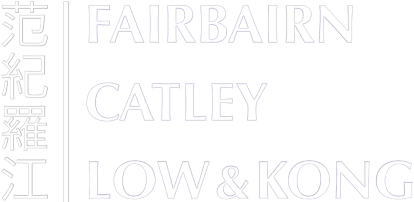3 The Input Perspective: Data and Copyright Infringement
In the first part of this article, we explored the output perspective concerning copyright protections for AI-generated works, addressing the nuances of ownership and authorship in this evolving landscape. Now, we turn our attention to the input side of the equation: the large datasets used to train AI models, which often involve reproducing copyrighted materials. Many copyright owners face challenges in identifying what data has been collected due to the opacity of proprietary AI systems. Ongoing lawsuits worldwide raise significant questions about whether the use of copyrighted works to train AI models requires explicit permission from copyright holders.
3.1 Hong Kong’s Proposed Copyright Exception
Under Hong Kong’s current Copyright Ordinance, there is no specific copyright exception for computational data analysis and processing. Consequently, activities related to AI model development and training may risk copyright infringement.
To address this, the Hong Kong Government is proposing a new copyright exception that would permit reasonable use of copyrighted works for text and data mining (“TDM”), as well as for computational analysis in the training of AI models (the “TDM exception”). The proposed exception would be applicable in both commercial and non-commercial contexts.
In an effort to balance the promotion of innovation in AI technologies with the protection of copyright holders’ rights, the government has outlined several proposed safeguards for copyright owners:-
(a) Lawful Access: Ensuring that access to copyrighted works is obtained legally.
(b) Opt-Out Provision: Making relevant activities unauthorised if licensing options exist or if copyright owners explicitly reserve their rights, allowing them to opt out.
(c) Usage Restrictions: Limiting further use of copies created under this exception.
(d) Additional Conditions: Implementing requirements such as sufficient acknowledgment, secured storage, retention for limited purposes, and destruction after a certain period
of time/upon request.
3.2 Balancing Innovation and Copyright
The proposed framework in Hong Kong draws inspiration from the approaches taken by the European Union, Japan, and Singapore, all of which have established copyright exceptions for text and data mining applicable to both commercial and non-commercial uses. Notably, the EU’s exception includes an opt-out option for copyright owners, while the UK’s exception is limited to non-commercial activities.
Although the UK government recently considered expanding its exception to include commercial use, this proposal was withdrawn due to concerns from copyright holders. A key objection is the potential erosion of the ability of copyright owners to capitalise on their works, as well as the disruption of established market practices, such as licensing agreements for TDM activities. The Consultation Paper suggests that these potential drawbacks can be alleviated with appropriate safeguards for copyright owners. It stresses that any TDM exception must balance the interests of copyright holders and the rapidly growing AI industry. Facilitating data mining and analysis allows creators to leverage existing works to generate new, original content using AI, potentially fostering innovation across sectors such as education, healthcare, and entertainment.
Additionally, concerns also persist regarding the practical implementation of the opt-out mechanism. For copyright owners, questions arise about how to exercise this right – whether through contractual agreements or unilateral declaration – and when such rights should be asserted, particularly if the exercise occurs after AI businesses have utilised the copyrighted work. From the perspective of AI businesses, a critical question is how to reliably identify and exclude works from copyright owners who have opted out of TDM activities.
4 Conclusion
Through this two-part exploration, we aim to illuminate the intricate complexities of AI development and its far-reaching implications for the legal landscape.
While tensions remain between the rights of copyright holders and the ambitions of AI businesses seeking to advance technology, finding a compromise is essential to align the interests of all stakeholders and to achieve a net positive outcome for society. For Hong Kong, a broad TDM exception that includes commercial purposes could be a starting point, paired with mechanisms that allow copyright holders to retain the option to opt out.
The intersection of AI and copyright law presents both challenges and opportunities. By rethinking existing frameworks and fostering meaningful dialogue with stakeholders, we can create a legal environment that encourages creativity, promotes innovation, and respects the rights of all creators in this new era of AI.


